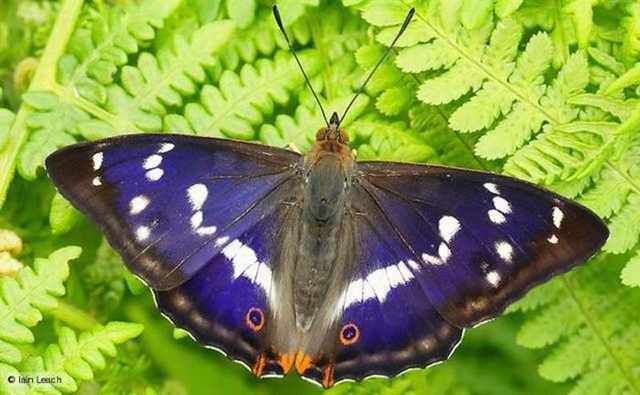Three Rare Butterflies
Emerald Swallowtail


 The Emerald Swallowtail, (also called Emerald Peacock, or Green-banded Peacock) is one of the few rare green butterflies, are mostly found in Southeast Asia including the Philippines, Indonesia, Borneo and Myanmar. If you look at the butterfly carefully you can see that the dorsal sides of the wings are covered by a powder of green scales and the background vary from dark greenish to black, with broad bright emerald green metallic bands. The undersides are black with orange, white and blue spots along the edges of hind wings, that show extended tails at the end. When it opens its wings we can see the color green for its torso, emerald on the hind wings, and sky blue for the top wings, also on the sides where the black is you see a
The Emerald Swallowtail, (also called Emerald Peacock, or Green-banded Peacock) is one of the few rare green butterflies, are mostly found in Southeast Asia including the Philippines, Indonesia, Borneo and Myanmar. If you look at the butterfly carefully you can see that the dorsal sides of the wings are covered by a powder of green scales and the background vary from dark greenish to black, with broad bright emerald green metallic bands. The undersides are black with orange, white and blue spots along the edges of hind wings, that show extended tails at the end. When it opens its wings we can see the color green for its torso, emerald on the hind wings, and sky blue for the top wings, also on the sides where the black is you see a
single yellow dot. Its wings refract the light and give rise to
blue and yellow visible reflections, producing the
perception of green color when additively mixed. When a
catepiller, it is black with orange spikes. The butterfly
belongs to the Papilionidae family. Its genus name is
Papilio, which derives from Palinurus, the name of the pilot
of Aeneas's boat in the Latin epic poem, written by Virgil.
The Purple Emperor


The Purple Emperor (A.K.A Apatura iris) for elders. They have dark brown wings with white bands and spots, and a small orange ring on each of the hind wings. Males have an iridescent purple-blue sheen. The larvae (caterpillars) are green with white and yellow markings, and have two large ‘horns’ at the anterior end and a smaller one at the posterior. Their iridescent wings that shine blue or purple in the light and used to be quite common in the British Isles. The Emperor’s diet is different to other butterflies - it eats the honeydew secreted by aphids, and occasionally on dung and carrion. It belongs to the Nymphalidae family, and
| its genus name is Apatura. |
Glasswing Butterfly
 The wings are transparent, its brim is a reddish brown, and there is a single white line that goes across the top wings. Because of its features, the butterfly's most common English name is glasswinged butterfly, and its Spanish name is "mariposa de cristal", which means "glass butterfly". The tissue between the veins of its wings looks like glass, as it lacks the colored scales found in other butterflies. The opaque borders of its wings are dark brown, sometimes tinted with red or orange, and its body is dark in color.
The wings are transparent, its brim is a reddish brown, and there is a single white line that goes across the top wings. Because of its features, the butterfly's most common English name is glasswinged butterfly, and its Spanish name is "mariposa de cristal", which means "glass butterfly". The tissue between the veins of its wings looks like glass, as it lacks the colored scales found in other butterflies. The opaque borders of its wings are dark brown, sometimes tinted with red or orange, and its body is dark in color.It too belongs in the Nymphalidae family, but its genus is Greta.
 The transparency of its wings results from the combination of three properties: first, from the low absorption of the visible light by the material constituting its wings, second, from the low scattering of the light passing through the wings and finally, from the low reflection of the light impinging on the wings surface.
The transparency of its wings results from the combination of three properties: first, from the low absorption of the visible light by the material constituting its wings, second, from the low scattering of the light passing through the wings and finally, from the low reflection of the light impinging on the wings surface.Adult glasswings can be found from Mexico through Panama and Colombia. They can migrate great distances and have been documented as far north as Florida.


Nessun commento:
Posta un commento